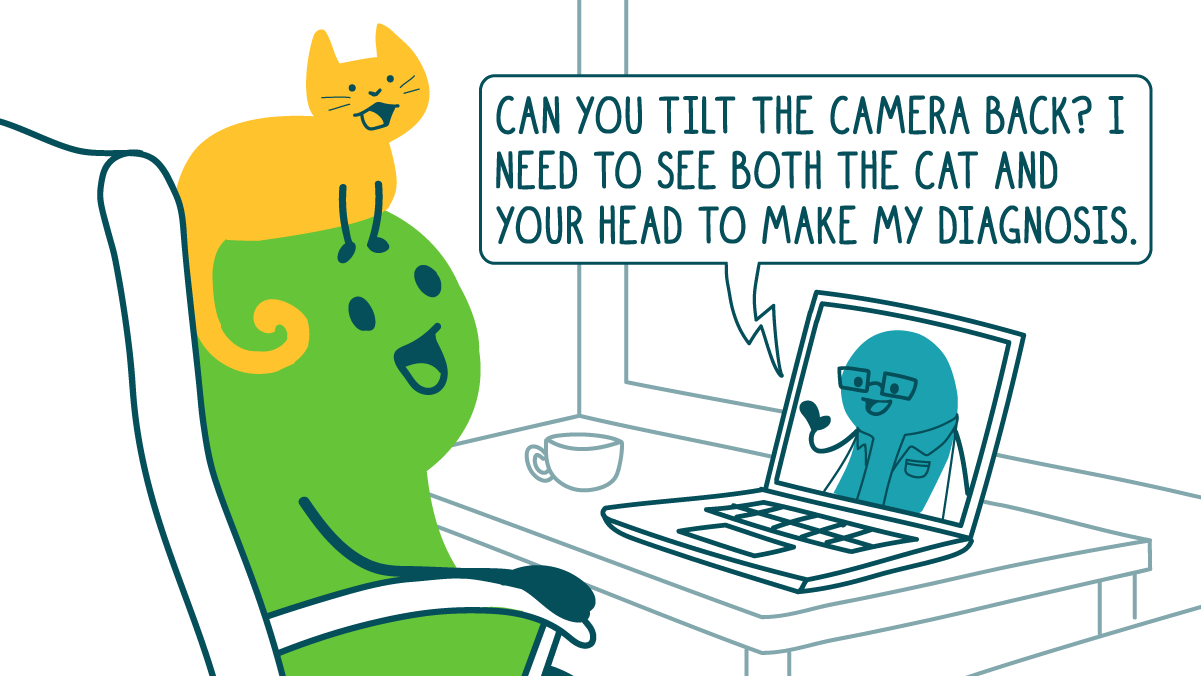
Here at We ❤ Health Literacy Headquarters, we’re big fans of both preventive health care and preventing the spread of COVID-19. So these days, dear readers, we really ❤ telehealth. According to CDC, 4 in 10 U.S. adults have avoided health care due to COVID-19 concerns. That’s, well, concerning! People need routine health care, pandemic or no — and telehealth lets them get it with zero anxiety about also getting COVID at their visit.
As health communicators, we can teach our audiences about telehealth and encourage them to give it a try. Start with a simple definition for the newbies out there: Telehealth — sometimes called telemedicine or a virtual visit — is basically remote health care. If you’re using a computer, phone, or tablet for a doctor visit, that’s telehealth.
And while telehealth certainly can’t take the place of all in-person visits, it’s a great option for things like:
- Yearly checkups with your primary care doctor
- Dermatology visits
- Mental health counseling
- Nutrition counseling
- Follow-up visits to share test results
Once you’ve covered the basics, highlight some key telehealth benefits:
- It’s safer. Right now, telehealth’s main selling point is that it allows folks to stay connected to care without the risk of getting COVID at a doctor’s office or hospital. Just think of it like social distancing, but with your doctor.
- It’s faster. When you cut out the commute, the waiting room, the second waiting room (er, exam room), the visit gets a whole lot shorter — and a whole lot easier to fit into a busy schedule. And who’s ever said, “I wish I spent more time sitting in waiting rooms”? That’s right. No one!
- It increases access. Telehealth is particularly helpful for people who need to see a specialist but don’t live near one — and it removes the transportation barrier in general. Many telehealth providers also offer appointments outside traditional doctor’s office hours, making it easier for people to find times that work for them.
So encourage your audiences to ask if their doctors offer telehealth — and to check with their insurance carriers to make sure it’s covered.
And finally, while COVID safety won’t be as much of an issue in the future (we sure hope!), 2 of the 3 benefits above will hold true long after the pandemic is over. So while it’s an excellent tool for keeping people connected to care during COVID, we think telehealth is here to stay.
The bottom line: Encourage your audiences to explore telehealth — during COVID-19 and beyond.
Browse recent posts